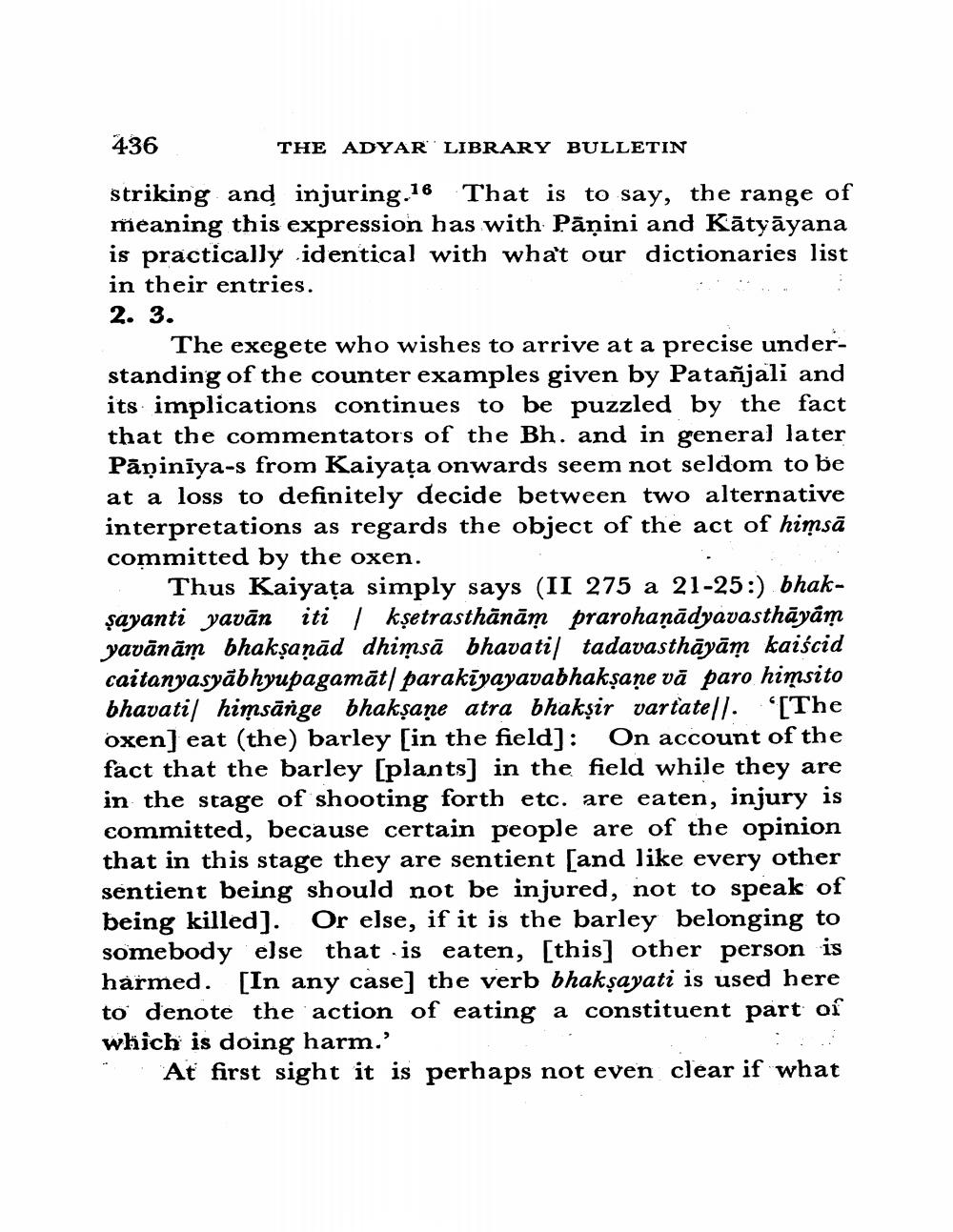Book Title: Cattle Field And Barley Note On Mahabhasya Author(s): A Wezler Publisher: A Wezler View full book textPage 6
________________ 436 THE ADYAR LIBRARY BULLETIN striking and injuring.16 That is to say, the range of meaning this expression has with Pāṇini and Kātyāyana is practically identical with what our dictionaries list in their entries. 2. 3. The exegete who wishes to arrive at a precise understanding of the counter examples given by Patañjali and its implications continues to be puzzled by the fact that the commentators of the Bh. and in general later Pāṇiniya-s from Kaiyața onwards seem not seldom to be at a loss to definitely decide between two alternative interpretations as regards the object of the act of himsā committed by the oxen. Thus Kaiyața simply says (II 275 a 21-25:) bhakşayanti yavān iti / kşetrasthānām prarohaņādyavasthāyām yavānām bhakşanād dhimsā bhavati/ tadavasthāyām kaiścid caitanyasyābhyupagamāt parakiyayavabhakşane vă paro himsito bhavatil himsānge bhaksane atra bhaksir vartatell. The oxen) eat (the) barley in the field]: On account of the fact that the barley [plants) in the field while they are in the stage of shooting forth etc. are eaten, injury is committed, because certain people are of the opinion that in this stage they are sentient sand like every other sentient being should not be injured, not to speak of being killed). Or else, if it is the barley belonging to somebody else that is eaten, [this] other person is harmed. [In any case] the verb bhakşayati is used here to denote the action of eating a constituent part of which is doing harm.' At first sight it is perhaps not even clear if whatPage Navigation
1 ... 4 5 6 7 8 9 10 11 12 13 14 15 16 17 18 19 20 21 22 23 24 25 26 27 28 29 30 31 32 33 34 35 36 37 38 39 40 41 42 43 44 45 46 47
